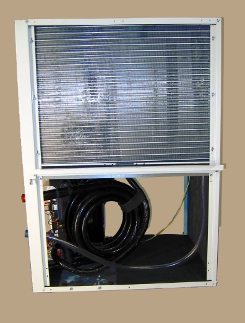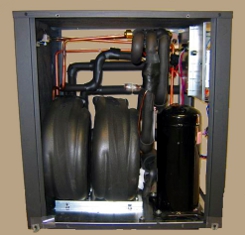
If you have been reading about geothermal heat pumps, you may have heard them called water-to-water, or water-to-air. What do water-to-water and water-to-air mean?
Water-to-water geothermal heat pumps heat and cool water, for hydronic radiant systems, or for dedicated water heating in commercial buildings (for example, washing machines in a laundromat or hospital).
Water-to-air geothermal heat pumps heat and cool air, for forced-air ducting systems. In the United States, most homes use forced-air ducting distribution systems, so water-to-air units are the standard type used.
A water-to-water unit has 2 water coils in it. One is connected to the earth loop, and the other is connected to the buffer tank, and then the hydronic distribution piping. The water in your hydronic piping circulates through this coil and is heated or cooled.
A water-to-air unit has 1 water coil, and 1 air coil. The water coil is connected to the earth loop, and the air coil is connected to your air ducting. Air from inside your home is circulated through this air coil to be heated in the winter, or cooled in the summer.
| Water Coil + Air Coil = Water-to-Air Geothermal Heat Pump |  |
| Water Coil + Water Coil = Water-to-Water Geothermal Heat Pump |  |